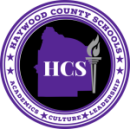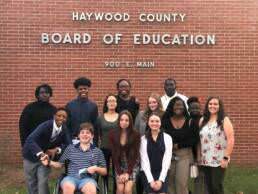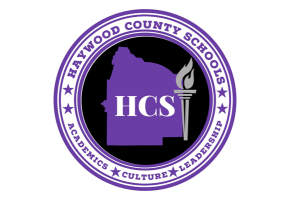Education Funding Must Stay Public
Public education in America has a long and sordid history. From its inception in Massachusetts in the 1600’s to the present day culture wars, public education has been the battleground for equity, equality, and opportunity. It has weathered segregation, desegregation, resegregation, the rise of private schooling, and various political attacks from the very government that funds it. These storms have been endured, not because the institution of public education is infallible, but because the people who pump life into it are astoundingly dedicated to the betterment of the students’ lives who attend public school. Public education continues to survive because of the district leaders, school building leaders, and, most importantly, the teachers in classrooms who help to mold and shape students into productive citizens. The core beauty of public education is that it is available to everyone – regardless of race, religion, or ability.
The core beauty of public education is that it is available to everyone – regardless of race, religion, or ability.
There is a long standing cliche’ that talk of politics or anything political is taboo or offensive. In the current, politicized culture in which society finds itself, avoidance of political conversations is most likely a best practice to keep peace and have cheerful gatherings with family and friends. The stark truth, however, is that EVERYTHING is political, and the decisions made in Washington and Nashville are threaded through the daily lives of every citizen in this nation and this state.
Speed limits are set through legislation. Tax rates are set by elected officials with a party letter next to their names. Government funding is specifically political, and public education has been a well worn arena for some of the country’s most challenging moments. Even today, local political parties are asking for school board races to be partisan.
Until roughly 60 years ago, African-American children could not attend school with White children. Ruby Bridges changed all of that one morning in New Orleans. Since that day, public education has been the scene for endless political battles over equal opportunity for all students. That is exactly what public education is at its core – a place for every student to have equal opportunity and access to high quality instruction and materials and to be educated in buildings that are fit for learning. While all of that sounds extremely idyllic, it is sadly not based in reality.
This past fall, the Tennessee Department of Education traveled across the state soliciting feedback from communities about the state’s funding model for education. Tennessee currently ranks between 44th and 46th in the United States in funding for education. Without having to dig too far into the funding, being that close to the bottom in the nation says a lot about how high public education is valued in the state. To the credit of the state, however, state leaders realized something needed to change, but as with everything in politics and public education, things are not as simple as they seem on the surface.
On January 11, Tennessee released its first draft of a new education funding model. Parts of the funding model were very encouraging, specifically the money that would be focused on helping financially disadvantaged students. On that same day, however, a bill was introduced that could be incredibly damaging to public schools in the state should it become a law.
State Representative Michael G. Curcio (R – Dickson) introduced a piece of legislation that would “extend(s) eligibility for an education savings account (ESA) to students zoned to attend a school in a Local Education Agency (LEA) that, at any time during the three-year period immediately preceding September 1, 2025, or thereafter, did not offer students 180 days of in-person learning each school year due to COVID-19 or that voluntarily imposed a mask mandate in response to COVID-19 and that voluntarily refused to allow parents and guardians to opt their students out of the mask mandate.”
In other words, any school district that followed CDC health guidelines during the pandemic would have funding taken from them and would allow students to leave the district for a private school should that district need to exercise non-traditional learning options or implement a mask mandate in the name of health should the need arise. In essence, taxpayer dollars would leave public education and be funneled into a private institution. What makes this bill even more nefarious is the fact that a pandemic is being used as a vehicle to push education savings accounts (ESA) through legislation.
In essence, taxpayer dollars would leave public education and be funneled into a private institution. What makes this bill even more nefarious is the fact that a pandemic is being used as a vehicle to push education savings accounts (ESA) through legislation.
ESA’s are not new to Tennessee legislation. In fact, they have been at the forefront of educational legislation for the last several years and are currently stuck in court due to their legality.
Stripping away the political ideologies that are associated with ESA’s (also known as school vouchers), ESA’s, at their core, have the ability to drastically weaken the public education system in Tennessee that is already underfunded and under attack.
ESA’s are presented as “options for students and families”, but in actuality are a way to continue to place public education in a bind by taking valuable financial resources from districts that are used to support student learning as well as hire employees. In a profession that is already struggling to fill vacancies, having funding follow a student to a private institution only furthers the struggle of reasonable teacher pay and teacher retention. It also divests educational resources from students who need those resources the most.
Haywood County Schools (HCS), like most districts in the state of Tennessee, is a rural district that is dependent on every dollar received from Nashville as well as local tax dollars. If ESA’s are ever implemented in Tennessee, not only would districts like HCS suffer greatly, but every public school district in the state would see the ramifications of losing students and funding.
While proponents of ESA’s paint a picture of giving students more options and opportunities, they fail to mention that private schools can deny or accept any student they choose. Even if a student were to qualify for an ESA, the private school the student wishes to attend does not have to accept that student. Private schools are not held to the same accountable measures that public schools are, therefore they will never be judged as “passing” or “failing” even though tax payer dollars would be channeled to those schools. The state could not dictate what curriculum is being taught or how it is being taught, but state dollars would be funding those institutions as well the curriculum. And those dollars would be removed from local districts, therefore denying the remaining students in that district options and opportunities themselves.
Even if a student were to qualify for an ESA, the private school the student wishes to attend does not have to accept that student. Private schools are not held to the same accountable measures that public schools are, therefore they will never be judged as “passing” or “failing” even though tax payer dollars would be channeled to those schools.
The foundation of public education has always been to educate every student who chooses to walk through the doors of their local school. Public schools have historically been, and continue to be, the cornerstones of communities like Brownsville, Ripley, Savannah, and Henderson. From Greenfield to Greenville, school districts have not only educated young people, but also helped families navigate the pandemic. While schools were closed to prevent communal spread of COVID-19 in the spring of 2020, school districts still provided meals for students as well as provided work that could be done both on paper or a computer. School districts did not stop working during the pandemic; they worked even harder.
While the loss of funding because of ESA’s is noteworthy, one of the most concerning aspects of ESA’s are the roots ESA’s have in racism and resegregation.
According to a recent study done by UCLA, the vast majority of private schools are made up of overwhelmingly white students while only 5% of African-American students and 4% of Hispanic students are enrolled in private schools nationwide.
Locally, in the southern region of the United States, private schools have seen an 11% increase over the last two decades while every other region in the nation has seen an overall decline in private education. In essence, this legislation presented by Mr. Curcio wants to take money from public education – composed mostly of minority students – and give that money to private institutions while at the same time not holding the private institutions to the same accountability to which public education is held.
Public education has survived and forged ahead through centuries of societal change and evolution, but public education in Tennessee is at a pivotal point in history. In order for school districts in the state to recover from the learning loss of the pandemic and fight through the attacks on curriculum, the support of communities and districts joining together for a common good is imperative. The onus of responsibility falls on stakeholders in local public education and school districts to contact their state representatives and demand the ESA’s not be an option for the state of Tennessee.
In order for school districts in the state to recover from the learning loss of the pandemic and fight through the attacks on curriculum, the support of communities and districts joining together for a common good is imperative. The onus of responsibility falls on stakeholders in local public education and school districts to contact their state representatives and demand the ESA’s not be an option for the state of Tennessee.
Yes, school funding is important, but public school students are more important than funding. Districts need funding to educate and support students – especially those students who are most vulnerable. ESA’s would only leech support and opportunities for students and communities as a whole. It would help for lawmakers like Mr. Curcio and his co-sponsors to hear that message, as well.
Gabe Hart – Chief Communications Officer – Haywood County Schools


